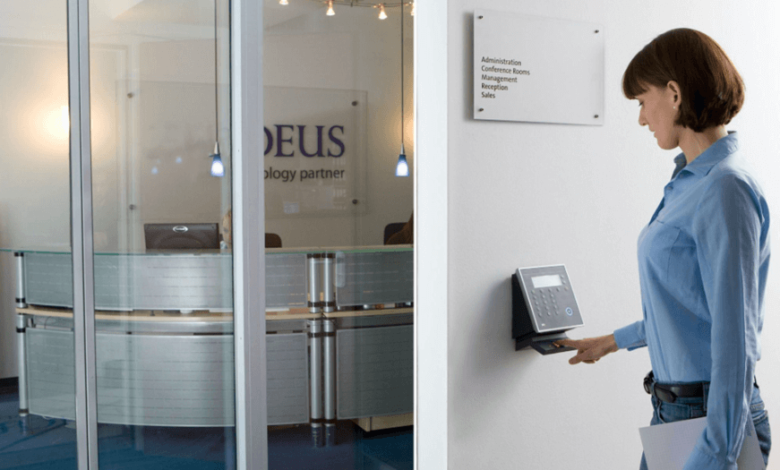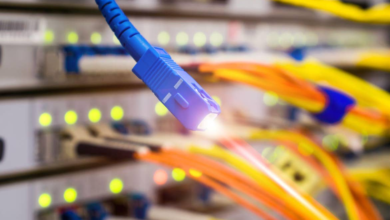The Future of Door Access: How Technology is Securing Modern Spaces

In an age where technology touches nearly every part of our lives, even the simple act of opening a door has transformed. From traditional keys to advanced biometric scans door access systems have evolved into intelligent security solutions that enhance safety, improve convenience, and provide unmatched control over who enters a building. For companies, schools, hospitals, and even smart homes, secure door access is no longer a luxury—it’s a necessity.
This article explores the current state of door access technologies, their benefits, key features, industry applications, and what lies ahead in the rapidly changing tech landscape.
What Is a Door Access System?
Unlike traditional mechanical locks, these systems authenticate individuals using digital credentials—such as access cards, key fobs, biometric data, or mobile devices—before unlocking a door.
Today’s door access solutions are part of larger security infrastructures and are often integrated with video surveillance, fire alarms, and building management systems for a centralized and automated approach to safety.
See also: How to Seamlessly Integrate Interactive Screens with Your Existing Tech Stack
Types of Door Access Technologies
There are several technologies available to manage and monitor access. Let’s look at the most commonly used systems:
🔑 Keycard and Fob Systems
These are among the most widely adopted forms of door access. Employees or visitors are issued an RFID card or fob that, when tapped on a reader, unlocks a door if they have permission.
📱 Mobile Access Control
With the rise of smartphones, mobile door access systems are becoming popular. Authorized users receive digital keys via apps, which they can use over Bluetooth or NFC to gain entry.
👁️ Biometric Access
This includes fingerprint readers, facial recognition, and iris scanning. Biometric door access systems are highly secure since they rely on unique physical attributes that can’t be duplicated or lost.
🔒 Keypad Systems
Users enter a personal code on a digital keypad. Though simple and cost-effective, keypad systems must be carefully managed to avoid unauthorized code sharing.
☁️ Cloud-Based Access Control
Cloud platforms allow administrators to manage door access remotely. Permissions can be updated in real-time, and entry logs are stored securely online—ideal for managing multiple locations.
Benefits of Modern Door Access Systems
Upgrading to a digital or smart door access system brings a variety of advantages beyond just enhanced security. Here are some of the most impactful:
1. Enhanced Security
Access can also be restricted by user, time, or location.
2. Real-Time Monitoring
Modern systems record every entry and exit, allowing organizations to track activity, identify suspicious behavior, and review logs when needed.
3. Remote Management
Especially useful for facility managers, remote access means permissions can be granted or revoked instantly, without needing to physically meet users.
4. Integration with Other Systems
Smart door access can be integrated with CCTV, HR systems, fire alarms, or attendance software to build a more intelligent, responsive security network.
5. Reduced Operational Costs
By automating access, businesses reduce reliance on manual keys, security staff, and physical badge printing. Maintenance is also lower for digital systems than for traditional locks.
Key Features to Look For in a Door Access Solution
When selecting a door access system, businesses should consider several important features:
- Scalability: Can it grow with your organization?
- User Management: Is it easy to add, remove, or update user credentials?
- Multi-Factor Authentication (MFA): Does it support an additional security layer like biometrics plus a PIN?
- Audit Trails: Can you easily generate reports on access logs?
- Mobile Compatibility: Does it support smartphone-based access?
- Fail-Safe Functionality: How does the system respond during power failures or connectivity issues?
Challenges in Adoption
While door access systems offer numerous advantages, there are also a few challenges organizations must plan for:
💰 Initial Investment
Smart systems can require a significant upfront cost for hardware, installation, and software subscriptions.
🔌 Connectivity Dependence
Redundancy plans should be in place in case of network downtime.
The Future of Door Access Technology
The future of door access is intelligent, intuitive, and increasingly integrated with emerging technologies.
🧠 AI-Powered Access Control
Artificial intelligence will enable predictive security—recognizing unusual access patterns and sending alerts in real-time. For example, if an employee accesses a location outside their normal hours, the system can flag this automatically.
📡 IoT and 5G Connectivity
Faster, more reliable connections will allow more devices and doors to be part of a unified network, especially in large facilities or across campuses.
🌐 Decentralized Identity Verification
Blockchain-based access systems may soon allow users to carry encrypted access credentials that can be verified without needing centralized databases—improving privacy and reducing hacking risks.
🚪 Touchless and Voice-Activated Access
Voice recognition and gesture-controlled doors may become the norm in hygiene-sensitive environments such as hospitals and clean rooms.
Conclusion
Door access is no longer just about locking and unlocking—it’s about building smarter, safer, and more adaptive spaces. Whether you’re managing a high-rise office, an industrial plant, or a modern residential complex, door access solutions offer the peace of mind, control, and agility that traditional systems simply can’t match.
By investing in the right technologies and keeping future developments in view, organizations can ensure they stay ahead of security challenges while offering a seamless user experience to everyone who walks through their doors.
Let me know if you’d like help to optimize this article for SEO and guest post outreach or research the best door access providers in your target market.




